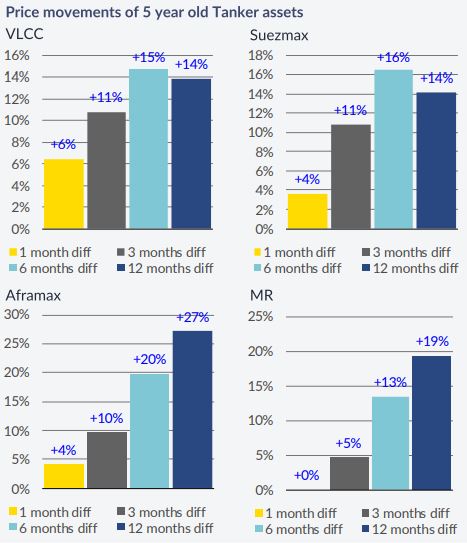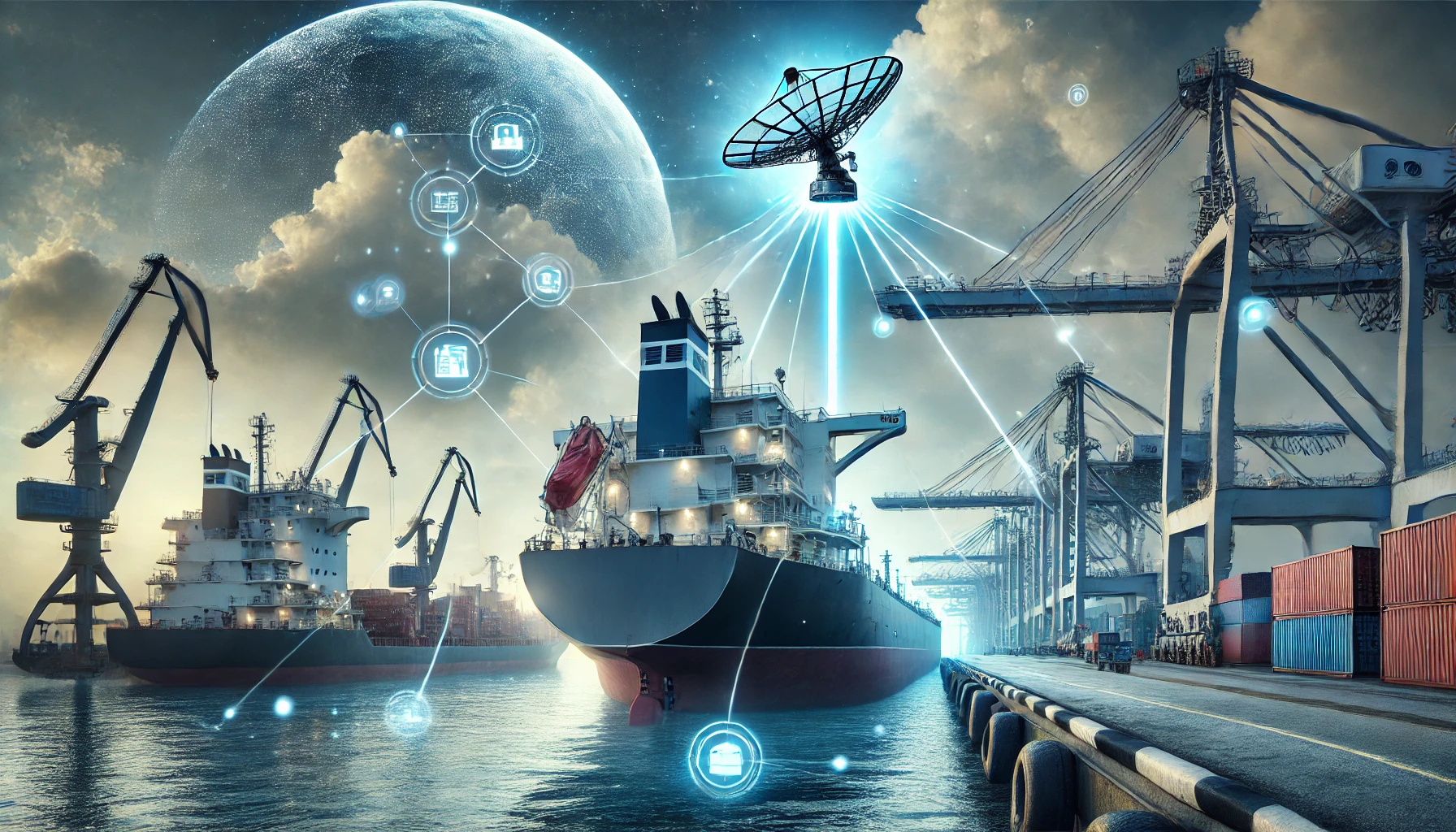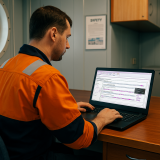Competition over the world’s maritime resources and territorial disputes over maritime borders are becoming increasingly prominent in international affairs. At the same time, depleted fish stocks and polluted waters make the question of how countries can collectively manage maritime resources a central one, particularly in discussions over climate change.
Against the backdrop of heightened competition in the maritime domain, China has been rapidly modernizing and expanding its naval capabilities thanks to an unprecedented shipbuilding effort. By contrast, the U.S. Navy is struggling to meet its ambitious goals toward expanding its fleet while nevertheless maintaining a demanding operational tempo.
Meanwhile, the resources that lie beneath the ocean’s surface are increasingly at risk of overexploitation. Illegal fishing is devastating already diminished global stocks and may soon present a severe crisis to countries whose populations depend on seafood for their diets. In the South China Sea, competition over fishing rights as well as offshore oil and gas reserves has been a major driver of tensions and conflict.
The maritime domain highlights the tensions between national sovereignty and transnational challenges, between the ocean’s littoral regions as exclusive economic zones and the high seas as a global commons. While often ignored in coverage of international affairs, it features prominently in bilateral, regional and multilateral diplomacy, particularly when it comes to resolving boundary disputes.
WPR has covered maritime issues in detail and continues to examine key questions about what will happen next. Will the United States shore up its naval superiority or continue to cede ground to China? How will the pivot to renewable energy affect competition for maritime resources? Will concerns over depleting fish stocks jumpstart global efforts to improve the state of the world’s oceans? Below are some of the highlights of WPR’s coverage.
Our Most Recent Coverage
Indo-Pacific Ambitions Might Be a Luxury Europe Can’t Afford
In recent years, several European states have sought to project their precious naval assets in the Indo-Pacific region in ways that reflect widely accepted fashions in strategic thinking. But the underlying logic of this thinking now needs to be viewed more critically after the return of interstate war on European soil.
Naval Rivalries
Countries around the world are improving their navies and stepping up their naval activities. That includes China, which has made qualitative and quantitative improvements, but also France and India. All of this stands in contrast to the United States’ struggles to improve the preparedness of its own fleet. These rivalries now include efforts to obtain port access and basing rights, as Russia and China increasingly seek to expand their naval presence overseas.
- What’s driving Vietnam’s efforts to upgrade its military—and in particular its navy, in Vietnam Modernizes Its Military With a Wary Eye on China
- Why China’s military and naval buildup is making some of its neighbors nervous, in China’s Military Advances Have Come With Some Political Downsides
- Why Australia should avoid reducing the AUKUS deal to a submarine purchase, in Australia Can’t Get By on Nuclear Subs Alone
- How a new naval base in Sudan fits into Russia’s strategic plans, in Russia’s Naval Base in Sudan Opens a Long-Sought Gateway to the Red Sea
Illegal Fishing and Pollution
Every fifth fish caught in the world is netted illegally, undermining efforts to officially address the alarming problems caused by overfishing. But with global fish stocks declining by as much as 50 percent, there is mounting pressure to address overfishing—and the governments, including China, that encourage it. Failure to do so could be catastrophic for food systems and economies around the world.
- Why there’s no more time to waste on addressing the impact of climate change, overfishing and seabed mining on the world’s oceans, in Only Urgent Action Will Save the Oceans Now
- Why the Biden administration should make ratifying a treaty protecting marine wildlife a priority, in Bringing the High Seas Biodiversity Treaty Into Port
- How China is using its distant-water fishing fleet to advance its strategic objectives, in China Shows No Signs of Curbing Its Illegal Fishing Industry
- How maritime pollution is driving the global backlash against plastics, in Can the World Win the War on Plastic?
Territorial and Resource Disputes
As varied as they are common, disputes over maritime access have become increasingly significant within domestic and regional politics. Bolivia’s campaign for Pacific Ocean access was a central theme during former President Evo Morales’ years in office. And China’s disputed claims to the South China Sea are a significant driver of political tensions with the affected countries. But recently resolved conflicts, including a long-standing dispute between Australia and East Timor over access to natural gas fields, demonstrate that diplomacy can still be an effective tool.
- Why two islands off the coast of Yemen have become a focus of that country’s civil war, in Yemen’s Small Islands Hold Major Strategic Value
- Why we probably haven’t heard the last word on France and Britain’s dispute over fishing rights, in France and the U.K. Hit Pause on Their Fishing Dispute, but It Isn’t Over
- Why maritime borders are the next flashpoint in territorial disputes, in The Persistence of Borders in a Globalized World
- How Duterte’s effort to downplay the Philippines’ South China Sea territorial dispute with China backfired, in Duterte’s Ingratiating Approach to China Has Been a Bust
Piracy
Piracy remains a problem, particularly in remote, conflict-ridden areas. Countries are increasingly working collaboratively to address this problem, but these efforts are often reactive. Because global waters will always remain difficult to police, lasting solutions to piracy depend more on providing economic opportunities to citizens onshore than eliminating piracy on the water.
- How an Islamist insurgency in northern Mozambique could move from land to sea, in Mozambique Could Become Africa’s Next Piracy Hot Spot
- What’s driving a shift in piracy tactics in the Gulf of Guinea, in Why Piracy Is a Growing Threat in West Africa’s Gulf of Guinea
- How piracy in southeast Asia is evolving despite efforts to tackle it, in Why Southeast Asia Remains a Hotbed for Piracy
- Why piracy remains a persistent problem off the coast of Somalia, in What’s Behind the Resurgence in Piracy Off Somalia’s Coast
Source: https://www.worldpoliticsreview.com/competition-and-cooperation-in-the-maritime-domain/











